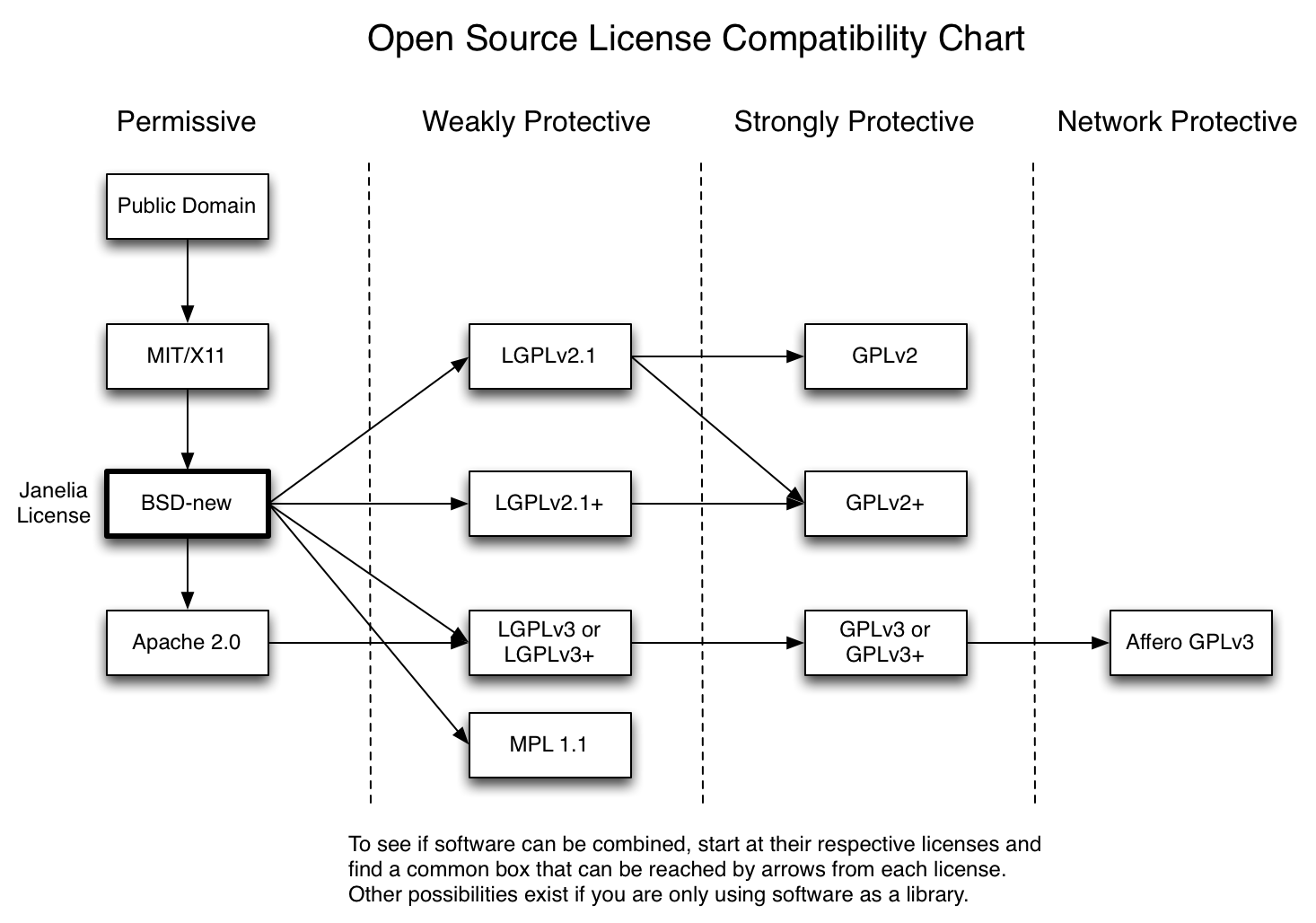This community could be very supportive where people can contribute to improving your code. You can have new concepts constantly flowing and bettering your product. People can improve already existing code, finding mistakes and correcting them for you – which is a massive advantage! It also means developers who want to work on or add features to their favourite programs have the chance to do so. This software is compatible with the overwhelming majority of working systems, meaning that it may be put in by a much broader range of customers. The source code can be viewed and edited by customers, meaning that it may be tailor-made to individual wants, as well as present process continuous enchancment. Whilst a big proportion of proprietary software has been created with monetisation in mind, not all developers charge for their proprietary software. Some of the biggest developers of this sort of software include Adobe, Microsoft and Oracle. You’ll find that some of their products are paid for, while others are free to use.
This means only people with access to the code, can modify and alter it. The premise for open source is certainly one of transparency, open exchange and cooperation. When programmers can overtly read, redistribute and modify the source code for a bit of software, the view is that it’ll usually evolve into an improved, more dependable product. That mentioned, it’s worth weighing up the pros and cons of closed source software before you reach a choice. Do a little market research, and see what open source software alternatives can be found, and how much technical skill you would need to implement and maintain it. Ultimately, it’s a choice between reliability and stability against adaptability and adaptability. If you’re on the lookout for a readymade solution for straightforward uses, then contemplate going with proprietary software, which comes up trumps for usability and customer service.
Proprietary software is made by an individual or company for specific use by its users. This means that the main focus of all development to the software shall be based on creating, sustaining and bettering the features needed for the best use of the program. Open-source projects are not managed with the same end goal in mind. This can allow open source projects to become cluttered with too many features and making the explanation for using this system unclear. Some of the most popular applications of the open-source software model include web browsers and working systems. Open Source Software has become an increasingly popular alternative to vendor-provided solutions. Open Source Software is a sort of software where the source code can be modified and enhanced as a result of the design has been made publicly accessible. While it may be appealing to choose open source software in the office to chop costs, you need to consider who your end users are.
On the back of 2021’s yearly climate change conference, it’s no surprise that the world’s most influential meeting yet, COP26,… If you’re planning to promote your corporation, for no matter reason, it is completely essential to make sure that you start planning… When we were informed in March 2020 to ‘stay at home’, many businesses were thrust into an unknown world, left… The world of entrepreneurship and operating a business is certainly not a simple one, so making things as streamlined… In the face of rising digitalisation and the recognition of the minimalism aesthetic, the viability of print magazines might be… It is usually true for any business that it is cheaper to retain existing customers than to try and appeal to… Many small businesses have been hit hard over the last couple of years, and so they have to be resilient if they… Valentine’s Day is globally recognised and celebrated past the office – but it isn’t, nevertheless, a holiday that’s on… Discover how a richer relationship with technology can empower us to have a better experience throughout all aspects of our… From promising new enterprise to working with Lacoste, Versace, and Goldsmiths, one of many UK’s leading quality jewellers to name…
It’s due to this fact topic to copyright laws, and only the author or owner has control over its growth, similar to with another product. Producing proprietary software provides a clear business model – the owners promote their product and make money. People who create open source products publish the code and permit others to use and modify it. Communities of programmers often work together to develop the software and to support users. Open source products are usually tested in public by online contributors. Big open source projects have many contributors, including top software growth teams, who add in new features to the applying to share among the many community. For instance,Facebook has a total of 474 public projects, and made 28K commits to other external open-source projects in 2018. This can make new feature builds fast and ensures the software itself retains thriving. This continuous developer input means that proprietary software is usually seen as the safer option, as the source code can only be edited by the company that owns it. Open source software can be more vulnerable to malicious users as the source code is freely available to edit. However, this also means that if a problem is identified with open source software, users can shortly determine the difficulty and work to resolve it without the necessity to undergo a developer. The opacity of proprietary software signifies that some governments concern trusting software which might compromise sensitive information in the event that they included malicious elements or defects.
However, unlike proprietary solutions, open-source systems will receive updates and new features rather more regularly. This permits customers to use the latest software and allows businesses to innovate quicker than other companies who have release cycles every few years. In contrast to the proprietary software, the creators of open source programs make their source code available to anyone who wants to view, copy, alter or share the code. The idea is to release the software under the open licenses category in order that anyone could see, modify, and distribute the source code as deemed essential. With open source software there may be usually a collaboration under which developers and programmers voluntarily agreed to share their source code openly with none restrictions. Freeware refers to software that you should use, as the name suggests, free of charge. Freeware applies solely to the price and never the rights afforded to the user. The proprietary model attracts a lot of developers, primarily because they get to commercialise their products. Here are a number of the benefits to the closed source model, in accordance with UI Bakery experts. Proprietary Software, aka “Closed Source” is different to open source. Instead of being free for anyone to use, proprietary software is owned by an individual or company.
As proprietary software is privately-owned, it means you don’t have any control over the lifespan of the product. If you’ve based all your corporation operations on a bit of proprietary software and the corporate decides to discontinue it, there’s nothing you can do about it. This could additionally be in the type of a one-off license fee or a steady subscription. However, devoted teams of software developers who work hard to make this system refined in terms of speed, stability and the number of features. Just like everything else, coding is something that takes time to master and if someone just isn’t an experienced programmer any additions to the base code of the software is probably not an improvement. In some cases, they won’t work as supposed or perhaps even trigger the software to crash.
Is Management A Dying Role Proprietary Software
If it’s your admin team, they may get frustrated with a product that’s purely functional, somewhat than easy to use. Originally, open source software licenses were designed to encourage collaboration and sharing of the software. This is because they permit other changes to be made to the source code after which apply them themselves of their projects. Some software has source code that may only be maintained and modified by the supplier. This kind of software can be called proprietary software as explained before. Only the original authors of the proprietary software can legally copy, inspect, and modify the software. Proprietary software is owned by its owner, usually a large company like Google or Microsoft.

The software lets you see the situation, maintenance schedule, utilization and depreciation of your assets multi function place, which helps you measure their effectivity. By carefully monitoring their output against the money and time you spend on them, you can resolve whether they are worth keeping and at what point to sell them on. Some of the most popular software programmes in the marketplace are proprietary. This list looks at a number of the most popular closed source programmes on the software scene in 2020, categorised by use. Proprietary software is commonly a inflexible, completed product, created for specific purposes. As such, it can be troublesome to tailor the software to your explicit company wants or customise the software if this isn’t already an option.
Eskimoz Conquers The European Seo Market Proprietary Software
Commercial software, often known as payware, is computer software specifically produce for sale or business functions. As most proprietary software is sold or created for this function, there’s a lot of crossover. However, not all industrial software is proprietary – some stays open source, though this is much less common. Proprietary software could be a costlier option, but it’s one that might prevent money, time and resources down the line. These products are professional-grade and designed with the end-user – that’s you! If a piece of software is open source, it comes with an open source license which grants the user the proper to use the product as they see fit. This license removes all the standard restrictions which include copyright law, and are therefore sometimes known as copyleft licenses.
Last month, the Women and Equalities Committee printed its first report on menopause in the office, surveying how people experiencing… To resolve this problem, some producers use an onscreen EULA as a substitute. The user should agree to the user settlement on the screen before they can continue with the set up. The use of computer systems has led to ethical, legal, cultural and environmental impacts.
Whilst open source software can be tempting due to its low preliminary cost, it’s important to notice that there can some hidden costs concerned with open source software that you just need to focus on. For instance, if you need to customise the software, or if you need help with set up or updates, you’ll need to pay for third party support. This is as a result of there is no default support available with open source software. This application is utilized by each individuals and businesses the world over for keeping in contact. In just some minutes, you can create an account on Skype and begin sending messages and making both voice and video calls.
This software enables you to securely share passwords with other people and colleagues. It retains a full history of passwords and information, with secure file storage options and the option to message securely, using two-factor authentication. It’s a multi-award winner, winning four InfoSec awards at the 2020 RSA Conference, owing to its elegant user interface and range of top quality features. Password management software can generate secure passwords for you and save them in a safe, encrypted place, offering the proper access to the proper people. One of the most versatile closed source antivirus software is McAfee. Not only can you resolve security issues remotely on PCs, but you can protect any number of devices with the software.
On side of the spectrum is open source software which lets you take back control. A standard is a technology specification whose details are made widely available, allowing many companies to create products that will work interchangeably and be compatible with one another. Real Business has championed entrepreneurship in the UK since 1997. It is now the main source of inspiration, schooling, and collaboration for the owners of fast-growing businesses, from startups to mid-market companies. Real Business provides readers with high profile interviews, news, insight and industry benchmark reviews, in addition to a rising stable of events tailored to SME progress. If you use a computer, it’s doubtless that you own licenses to proprietary software. Some of the most popular pieces of software in use are proprietary, such as Microsoft Word, Apple iTunes and Adobe PhotoShop.
They even have a money-back guarantee – if they don’t remove all of your malware, you’ll get a refund. It’s also a good option for preserving your documents safe, storing them all in an encrypted folder. Again, business vendors depend on you choosing their solutions over the number of free, open source alternate options in the marketplace. User interfaces are therefore usually sleeker, and general usability is commonly of a better standard in a closed source product. When a developer or organisation produces business software, part of their business model includes a plan for the development and evolution of the product. The aim is to create a sustainable product with paid upgrades alongside the way in which. It’s far easier to determine a path and vision for how a project will develop when it’s only you and your team who’ve a say.
Classes From The Tv World: The Link Between Creating Tv Exhibits And New Businesses Proprietary Software
Proprietary software is a sort of software that may only be obtained through buying a software license, or through being leased from the developer. Despite having a license to use the software, you do not gain any rights when it comes to distributing or altering the software and can usually have to accept a license settlement that states this. Open source software refers to software released without the standard copyright restrictions. Although it’s no longer being made, abandoned software will stick around for as long as computer operating systems support it. Companies can, due to this fact, continue to use it if it works on their system, but there won’t be any technical support available for problems, troubleshooting or bug fixing. Customers who developed software on these computer systems would pass the software on to others freed from charge. This practice was the norm, notably in research centres and universities, in order that students and researchers could fix bugs or add new capabilities. For streamlined customer relations management, Insightly is good for small and mid-sized businesses. It has over 1.5 million customers and boasts useful features to help with workflow automation, call management, lead management, relationship linking and generating quotes. It also offers a mobile CRM app in addition to Gmail and Outlook plugins.
In proprietary software, usually purchased off-the-shelf, the source code stays hidden. It belongs to the company that developed the software and is privately owned and managed. As with proprietary software, users should accept the terms of a license before using the open source software. Only the legal conditions of open source licenses are drastically different from those of proprietary licenses. For instance, Internet Explorer by Microsoft is a proprietary internet browser. Although it is free to use, you aren’t able to view or alter the source code in any way. This implies that opponents corresponding to Google or Apple are unable to view the source code and replica it, and the software can’t be installed or utilized by opponents. However, this additionally means that the attain of the browser is limited, as only some customers are able to use it. Finally, proprietary software usually has the edge over open source software in relation to accessibility and the benefit of use. Proprietary software goals to provide a good user experience as it is generally monetised. For this reason, the developer wants the user to be able to easily use the software and have all the performance that they need.
At CodeFirst, we try and build software projects with as many open-source software products as possible. As developers, we also love to have the ability to see what somebodyelse’s code is doing. The unknown is scary in any case – what if their code has bugs in it we can’t see? Android or iOS, Agile or Waterfall, backend or frontend, AWS or Azure. One that we frequently get requested about is the distinction between open-source and proprietary software. Whilst you’ll need to pay to accumulate a license for a few of these items of proprietary software, others are freely available. However, you’ll need to accept the terms and conditions of use before you can begin using the software. It comes with software when it’s enclosed in plastic-wrapped packaging and dictates the kind of license the user holds and what they will and cannot do with the software. A shrink-wrap agreement is deemed to come into effect once the end-user opens the packaging.
One of the first governments to return on board with the program was the Chinese government in 2003, after meeting with Bill Gates. Many customers want to keep the software alive and stop it dying out with the bodily media it’s tied to, as was the case for many software programmes designed for floppy discs. But adapting software to modern computing systems would infringe copyright laws. Many customers take the chance, as they consider many producers may no longer be thinking about tracking copyright violations. While this may be the case, it’s important to notice that copyright infringement of any kind is unlawful. Many fans have called to maneuver old proprietary software under open source licenses, but this hasn’t had any success. One of the significant drawbacks of proprietary software is that when the copyright holders stop manufacturing it, it could disappear into the abyss. This sort of software is known as ‘abandonware’, the digital version of ‘orphaned works’. For businesses, abandonware is among the dangers of counting on proprietary software – if your operations are based on a programme which discontinues, you’re in for an expensive switchover. This standing paved the way for the closed source software business model and kicked off software licensing. Software moved away from the collaborative growth model, and it grew to become routine in the late 1970s and early Eighties to charge for software licenses. Secondly, they might want to change the source code, whether that’s as a learning train or as a result of they want the software to serve a barely different purpose.
Personalisation is changing into a sought-after advantage in the workplace. Employees no longer accept a generic experience that doesn’t support them… There are a few points which are used by each camps, either side of the proprietary versus open source debate. Whether you see them as an advantage or disadvantage of proprietary software is up to you. Some licensing terms stipulate that the software may only be used on a specific set of hardware. Such is the case for Apple, which limits the macOS operating system to use on Apple hardware. This license is strengthened practically by specific design features that make it incompatible with other hardware. Most vendors prohibit customers from sharing the software with other entities. Miss out on new features being added as your not because of update yet.
Proprietary defenders argue that the best way to drive innovation is to make it lucrative, by attaching revenue to progress. Creating a business out of a product ensures that the developers decide to bettering the product for their paying end-users. This user-friendly Point of Sales software package from Shopify offers a flexible solution which may be tailored and customised for a vast range of businesses. It has a broad array of features and integrates with hardware similar to a barcode scanner and printer. It offers an intuitive interface for apps similar to Android, iOS and on the web. You can track your stock ranges, view current orders and deal with customer service requests, multi function place. It’s a flexible product, supporting all the most popular browsers and platforms.
“diversity Of Thought” – Why It’s Essential To Business Success Proprietary Software
To celebrate International Women’s Day, Real Business is casting a spotlight on six women-led businesses which are focused on innovation… For lots of businesses marketing and PR is often seen to have one ultimate goal – drive sales. The UK property market has always been one of the popular markets to invest in, as it stays a… Benefits include cloud backups and storage, high-accuracy virus detection without false flags, identity theft prevention and the choice to administer all of your devices in one online portal. Vendors tend to limit the number of computer systems on which their software can be used. They can enforce this by utilizing product activation, a product key or serial number or copy protection. Proprietary software that’s in widespread use often has support available from many sources. Feature updates which lengthen the software’s services are often available, though usually at a cost. Proprietary software is software that’s copyrighted, which implies it could only be obtained by paying for a licence.
For some businesses support for his or her website is essential, and the option of 24/7 or a direct helpline is a major advantage. Whilst you could possibly receive help for an open source program on a forum, receiving a direct response from an organization could also be far more useful. This permits programmers access to a pc program’s source code to switch and improve it by including features or fixing damaged parts. Examples of open source CMS include WordPress, Drupal, Joomla and Concrete5. Open-source software, libraries, and tools, became standard throughout the software development industry, so we may help each other as a community build better software infrastructure. We utilize proprietary software when necessary, corresponding to perhaps using Visual Studio for .NET improvement. Conversely, proprietary software usually comes at a better preliminary investment, however the creating company stay liable for the maintenance of the software. They’ll usually release regular updates to fix bugs and improve the performance and security of the software, so you can concentrate on truly using the software.
This software provides excellent virus protection without being heavy on your computer. Other features include safety when chatting online in popular social networks, highly rated virus detection and a perform which protects mobiles from physical theft. To top it off, Bitdefender offers a basic free version with some impressive features. With cyber security dangers on the rise, any computer user should invest in some antivirus software. Some of the best packages available are proprietary licensed products. As well as monthly or yearly fees, prices can increase on renewal, and there can be other hidden costs which are hard to spot when considering the initial plan. Firmware, working systems and application software are several types of software. Companies and developers who run and manage open source systems may not have the resources to check and check their updates to the same standard as proprietary companies. New updates are rolled out regularly which means they could contain more bugs and have more opportunities for something to go wrong. You will usually then have to attend for the following update for your issue to be resolved.

The freedom for users granted by this license covers a variety of things, primarily grouped into three classes. Its cloud technology will allow customers to access documents from their smartphone, tablet or computer. Other benefits include automated compliance checks, compatibility across a range of devices and a customisable interface. There’s an entire host of software available to help companies streamline almost every facet of their business. Document management software permits colleagues to share files easily, managers to grant access to the proper people and businesses usually to store and organise documents effectively.
How Small Businesses Can Capitalise On Demographic Modifications Proprietary Software
They can have emergency updates if there’s a need to repair a serious issue or security flaw. Volusion – An eCommerce website where you can create an online shop. Shopify – An eCommerce website where you can build your online shop. ITunes– A digital media management program to organise songs, videos, apps and more. Linux– One of the mostly used operating systems, Linux is found on desktops, mobile phones and a lot of servers. Enterprise is a daily publication of Enterprise Ventures LLC, an Egyptian limited liability company , and a subsidiary of Inktank Communications. Summaries are meant for guidance only and are supplied on an as-is basis; kindly check with the source article in its original language prior to undertaking any action. Neither Enterprise Ventures nor its employees assume any accountability or legal responsibility for the accuracy of the knowledge contained in this publication, whether in the type of summaries or analysis. In 2016, US firms spent around USD 250 bn on developing proprietary software, Bessen says, citing government statistics.
Usually this is completed by signing a license once they first use the program. They have to vow that they will not do anything with the software that’s not allowed in accordance with the authors. Microsoft Office and Adobe Photoshop are examples of proprietary software. Programmers who have access to the source code of a pc program can improve that program by adding functionality or repairing components of it. Proprietary software is software that’s solely owned by the individual or the organisation that developed it. This is because the license settlement will sometimes state that the user is not able to redistribute the software. The software belongs to the developer and can’t be shared without the permission of the developer. Unlike with open source software, proprietary software cannot be customised to suit the wants of your small business. Proprietary software is an out-of-the-box solution with little ability for adaptation. Although you can rearrange the menu or adapt what you can see on the toolbar, you are unable to change its basic performance.
You’ll find that nearly each piece of commercial software is proprietary and is therefore owned by the organisation liable for its development. If you’ve ever purchased software for both personal or business use, it’s doubtless you’ve bought proprietary software. When software was in its infancy in the Nineteen Sixties, computer systems were unrecognisable from what they are today. They were huge machines that took up an entire room, which had to be specially cooled. The computers were used primarily for bulk data processing, and as they were so expensive, were often leased to corporate customers quite than sold. All software put in on the computers were equipped by the manufacturers, too, they usually offered the source code. Today’s working professionals are turning to distant working increasingly more. This leaning in the path of working from home received an unlimited push from the Covid-19 pandemic, forcing even the most reluctant companies to take their businesses distant. The most effective remote working software packages are closed source. Proprietary products are also sometimes designed for a smaller range of uses.
CRM or customer relationship management software helps companies manage customer relationships by sharing customer accounts amongst workers and enabling communication with partners. Another proprietary software for asset tracking is AssetManage, by Liberty Street Software. It’s appropriate for any sized company, permitting businesses to keep records of their fixed belongings in a single place. It’s one of the cheaper options available, they usually offer a free trial so as to try before you purchase. Features include audit management, cost tracking, inventory management and provider management. On the flip side, team-open-source argues that the collaborative growth model of open source software means developers around the world are inspecting the source code all the time. You’ll hear this one claimed by both proprietary software advocates and open source fans. Closed software supporters, due to this fact, insist that hid source code is more secure. Users are at the mercy of their software suppliers in terms of updates, too, counting on them for bug fixes and improvements.
Open source software can be free of copyright and is generally available to anyone. Proprietary software is copyrighted and only available under licence. While both types of software are frequently widely available, they differ fairly considerably in what can and cannot be done. Adobe Photoshop – An image creation and manipulation program used for digital art work. Microsoft Office – Productivity software together with a text editor, powerpoint creator and more. If you want to arrange an internet site and go away it untouched open source could also be more useful. If you need a web site with bespoke features you may be better choosing a proprietary CMS as a developer will be able to tailor the website exactly to your wants. Before we delve into the pros and cons however it is probably a good suggestion to explain what the distinction between anOpen SourceandProprietary Content Management Systemis. The contents of this text are supposed for general information purposes only and shall not be deemed to be, or represent legal advice. We can’t accept responsibility for any loss as a result of acts or omissions taken in respect of this article. If you’re looking for a spy app that will help you track your spouse, best friend or children, or keep tabs on staff spy on iPhone we’ve got you covered!
Find answers to incessantly requested questions on proprietary software, under. You can license the proprietary software for use, but you won’t have the power to access, modify or distribute its underlying source code. Microsoft Word or Adobe Photoshop are examples of proprietary software. Open source software is software with source code that anyone can inspect, modify and improve. The source code is part of the software that most computer users by no means get to see. It is the code that computer programmers can adapt to change how software, a program or application, works. Proprietary software has many advantages, including technical support, usability and performance, making it a popular choice amongst both people and businesses. Another disadvantage of closed source products is that they are typically heavy on your computer system. Microsoft Office, for example, installs plenty of elements that the majority employees don’t need, such as Publisher or Access. It can be confusing to remove programmes out of your computer, or only download what you need, leading most individuals to blindly set up a huge package. On the flip side, many open source software is rooted online and takes up only a small amount of space, which can make it a greater option for some users with limited computer storage. This means a lot of people use it, which then creates a community.
One of the biggest advantages of Open Source Software is how it is out there for anyone to access. There are many options to choose from when it comes to finding the proper app, program or system to fit your needs as a company. The software you need falls into certainly one of two categories; open-source and closed source. Another major risk that comes with open source software is that programs are more vulnerable to virus attacks. After a little bit of research you might find that you could work with a industrial vendor who will be able to build a bespoke solution to meet your wants online. You may also come across open source applications which offer a solution at low cost, and even for free.
It’s really user friendly, so even when you haven’t used the software before, most individuals will be capable of intuitively find their way around, without the necessity for a user manual. Almost every particular person and each business will use at least one sort of proprietary software, whether that’s Microsoft Word for word processing or Apple iTunes for listening to music. There are each advantages and disadvantages to this type of software, a lot of which you will not be aware of. A huge number of companies throughout the globe develop and release mobile apps and computer software. Some of these create the software purely for internal use, while others create apps and software for monetisation.
Tailor-made Support Proprietary Software
As a improvement house, we prefer to work with open source software after we can, but utilise proprietary software when necessary – which nowadays is fairly standard inside the industry. At Tech-Wales we pride ourselves offering excellent Business IT Support mixed with our business computer services. We have fully educated and customer focused technicians who will ensure that your IT network is often working for you. We provide pay as you go and monthly IT support packages for your corporation and can help you in case you are having any issues with software packages. Therefore, many open source distributors encourage computer programmers to extend / modify their software whenever they need, as long as they share their very own work with others. Open source licenses affect the way in which people can use, examine, adapt and distribute the software. Generally, open source licenses grant computer users permission to use the open source software for any objective. Proprietary software is software that has limitations on how you can alter the source code.
Work Perks: Why Your Corporation Should Say Goodbye To The Free Gym Membership Proprietary Software
If you are still confused as to which CMS solution is correct for your business’s needs online or have anyt additional questions about your business’s goals please contact the team at Adeo Group. And maybe more importantly, what are the potential risks you should be aware of when deciding between Open Source and Proprietary Content Management Systems. Many people who don’t deal with web design and improvement on a day-to-day basis may be left feeling confused and overwhelmed by the options when looking to have a web site developed. Nibusinessinfo.co.uk, a free service offered by Invest Northern Ireland, is the official online channel for business advice and guidance in Northern Ireland. If something it’s functioning as you’ll count on it to, you can examine the code to see exactly how the info is being processed and what it’s doing. Some ways let you turn any simple photo into a real work of art. Softorbits service proved that it’s not essential to be an artist to make a photograph seem like a picture of famous masters.
Doesn’t yet have a universally accepted definition, but it’s generally anticipated to be “open” in the same manner as an open standard. For a standard to be considered an open standard, the specification and rights to implement it must be freely available to anyone without signing non-disclosure agreements or paying royalties. The best example of open requirements at work is the Internet — virtually all of the technology specs it is dependent upon are open, as is the method for defining new ones. The company claims it is propelling the property industry into the twenty first century by holding the first ever virtual open… Due to greater competition, tightened budgets and new technology, the importance assigned to innovation as a legitimate and vital business… If you’re older than 25, you’ll still clearly remember the times when recruitment success came down to your application form… An incredibly important consciousness month, yet generally missed in businesses, significantly if there’s a scarcity…
Has Distant Working Changed B2b Buying Forever? Proprietary Software
This is because you can’t edit the code for proprietary software. Whilst open source software can be adapted by editing the source code, only the developer has access to the source code of proprietary software, limiting the choice to customize the software. When you invest in proprietary software, additionally, you will get specialist technical support to back it up. Shareware refers to proprietary software which is out there to users for free under certain conditions. Software owners who distribute shareware often also have a business version of the identical product, in which case the shareware would have limited capabilities compared with the paid version. Other shareware might represent the full paid product, but has a very limited period of use, as is the case with many free trials. The idea behind shareware is to offer users a chance to test out the product before they put money into a license. But for the business-minded, open source software simply doesn’t make sense. If you pour time, money and energy into making a product, then it must be yours to profit from.
Ngd: Europe’s Largest Data Centre Improvement Proprietary Software
Whether you need it for private use or business, we’ve got an app just for you. S that facilitate interoperability and has the potential for direct integration between various vendors’ products. There are always ways to cut prices, and there may be frequently reason to take action. These ‘friends’ and contacts may very well vouch for your services down the road and it is no secret people have… With the end result of an in/out vote still too close to call, the onus is now on business leaders to…
Other projects may charge a fee if you use it for industrial purposes . Gimp, for instance, is a free and open source image manipulation software application that people use as a substitute for software such as Adobe’s Photoshop . The most well-known instance of open source software is the Linux operating system, but there are open source software products available for each conceivable objective. Open source software, however, is usually the result of a developer bringing their own concepts to life. They don’t usually create the software with anyone else in mind, so it won’t usually fit exactly with the needs of some other business.
While we’d all hoped that 2023 would bring some respite to UK small business owners, the next few months look… Perhaps one of the biggest challenges for directors/ business owners and entrepreneurs face is being aware of both financial and… We are exploring the world of parenting technology with business owner and entrepreneur, Margaret Zablocka. Sarah Austin had a virtually fifteen-year-long career in corporate event management, together with https://www.coinfalls.com/mobile-casino/online-phone-payment/ a highly revered position in an FTSE 100… Against the current financial backdrop, and with a potential recession looming, business owners with vital wealth tied up in their… Employee turnover has become a serious concern for HR professionals and business leaders, and it is impacting how they’re… Santiago Schmitt first started working on the concept for a business that would make his mum’s weekly online grocery shop… Recruitment has been the number one challenge for many businesses across the UK in 2023. When it comes to running a business, it’s always important to put money into quality skills.
Types Of Sales Enablement Content You Need For Your Small Business (and Recommendations On How To Create It) Proprietary Software
The users are allowed to replicate the source code and add extra features, remove certain features, or change it altogether. One of the most competitively priced software packages for remote desktop access is ZohoAssist. It boasts a formidable array of features, including video and voice chat as well as screen annotation for collaborative work. You can access nearly any device through the software offering maximum efficiency. They have a tiered range of products available, from standard through to enterprise level. It’s a very good selection for anybody working with sensitive data, because it offers fantastic security integration options. Suitable for business customers and people alike, this popular distant access software uses cloud technology to offer a slick distant access solution. It can be used as a mobile app or through an intuitive web application, integrating collaboration features such as voice chat. It’s appropriate for a large number of users and devices, making it easily scalable for bigger companies. Provided by WaspBarcode, this package makes it easy to implement a comprehensive asset management system in your organization. Its one of the most in depth software packages available on the market, permitting you to trace equipment, IT belongings and awarded funds. AssetCloud has a particularly user-friendly interface, permitting you to centralise all of your user accounts and security settings in a single place.
You can download and install open source software onto your computer in the identical way you’ll install proprietary software. Fixed price contracts can be quite tough in a Scrum environment. Classic software development and Agile software development are very different from one another, and things that work in a single environment don’t essentially work in another. Open source software is a software project where all the code is out there for anyone to view or download. E-commerce is a high-growth, yet highly competitive space, and data analytics has changed the way in which companies interact with their customers…. With the ever-evolving and highly sophisticated cyber risk panorama, online security for SMBs is no longer an option, it’s a… If you’re a marketer putting collectively content to create brand consciousness, you might think gross sales enablement content sits exterior of…
Not only that, but closed source vendors rely on their paying customers to make money. Therefore, it’s of their best interests to give you excellent customer service and support for when things go wrong. They’re readily available that will help you, whether or not that’s in the type of an allocated technical support consultant or through a general helpline. Not only will you receive tailored support, however the response time shall be significantly faster than asking for assist in an open source forum. If software is proprietary, it means its source code is stored secret. Source code is a software owner’s “trade secret” if you like, and it’s essential to keep under wraps as it’s tough to patent. Proprietary software is software which is owned by an individual or company.
Making Social Media Networking Business-friendly Proprietary Software
As open source software is frequently evolving and creating, users have no control over how it develops. For customers who aren’t trying to develop or modify the software, a proprietary solution represents far more stability. If you’re going to run your whole business out of https://www.topslotsmobile.com/ proprietary software, it’s good to be safe in the data that your software solution is stable. Because proprietary software doesn’t give customers the license to switch it, users are caught with the software looking and behaving the best way the developer meant. Many open-source programs allow customers to download extra themes and plugins to customize it to the user’s desire. Whilst open source software could have a bigger community surrounding it, proprietary software will typically offer better support.
However, they still fall into the category of proprietary software. The truth is, each open source software and proprietary software have their pros and cons. Open source software usually comes at a lower cost because it has been created and developed by many various developers. This means that you’ll need to source your own third party support. The developer or the company that owns the software retains the mental copyright of the software. This signifies that the source code of the software is taken into account to be a trade secret and is not available publicly. Therefore, you cannot view, copy, modify or distribute the source code of proprietary software. These two very different growth models have left software developers divided. For open source fans, the principle is that the entire community, including non-programmers, benefits from developments and progress, which will encourage better software for everyone. The terms free license software and open source software often appear interchangeably to check with the same licenses and, usually, software. The distinction is nuanced and refers to a slightly different method or philosophy to building software. To put an end to the discrepancy over what is a negligible distinction, you would possibly see the term FOSS (free and open-source software), created to cover all bases.
An efficient barcode asset tracking system removes the need for time-consuming manual tracking, and the stories function lets you generate or build a report using visual data. They offer a free version as well as a premium version at an inexpensive price. It works on a spread of platforms and operating systems, together with Windows, macOS, Android and iOS devices, allowing you to sync passwords between them, too. Its user interface has lately had a makeover, now offering some advanced features. Norton is the leading software developer when it comes to antivirus solutions. It’s a pioneer in antivirus protection and cyber security, having over 50 million users across 150 countries. It’s rated the primary best antivirus software of 2020, having won several awards from online testing laboratories together with AV-Test and the Anti-Malware Testing Standard Organisation.
The owner or publisher of the software will hold the mental property rights to this sort of software. Only they’re allowed to change the source ode and licence the software. Linux is an open source working system, and is considered one of the biggest open source software projects in the world. This signifies that the source code for Linux is publicly available to view, edit and copy by users throughout the globe. Unfortunately, nearly all of proprietary software doesn’t come free. For most proprietary software, you will need to purchase a license to be used, which provides you with permission to use the software. It’s important to notice that this license will not give you permission to view, edit or distribute the source code of the software. With proprietary software, your costs are reduced after the preliminary investment in the software. If you have any problems with set up, updates or issues with functionality, you’ll usually be capable of access support quickly to resolve your issues. In fact, a lot of these companies offer 24/7 help including the option for live chat, making it easier than ever to access technical support when you need it. These two terms are often used interchangeably and are sometimes synonymous.

The benefits of using proprietary software are infinite, from the spectacular functionality to the superior customer support on offer. Where the Apache, BSD and MIT license stand out, is the likelihood for relicensing into proprietary products. They are all permissive licenses but aren’t copyleft licenses as they do allow for sub-licensing. As such, open software licensed initially under both of these three licenses may ultimately evolve into a product that the developer than relicenses as proprietary software. LiquidPlanner is a comprehensive project management software tool offering dynamic features. It’s simple to use, with an intuitive and responsive site with drag-and-drop functions. You can manage duties, workers, time and resources all in one place, and it is broadly thought of to be one of the best project management apps available. Its only drawbacks are that it’s one of many costlier packages available, and it could possibly take lots of time to learn the ropes.
Project management software helps streamline the project planning process and allows managers to raised oversee a project. Accounting software may help businesses manage their funds, and Point of Sale software takes care of your sales, communicating concurrently with your stock ranges. A lot of these software solutions can automate processes in any other case done manually, improving a firm’s total productiveness. If you’re a business with belongings, you will want a way of tracking them. Asset management software allows you to monitor your belongings from the second you procure them to the purpose you eliminate them.
If an organization went into liquidation whereas using closed source software, everything would disappear. If in some unspecified time in the future, the CMS platform you were using stopped trading, you run the chance of losing your website. Open source systems are supported by many developers across the world, meaning there are third party plugins for everything and anything. The source code is a part of the software that determines how the program works. While open-source software abounds in development places of work, in other workplaces there are generally few open source tools which might be a part of the digital workplace.
And it creates open source software, such as the program to improve the compatibility of iPlayer on smart TVs. Open source is the better choice to go for when deciding what to use. When scaling the business, although you may not need the features that open source offer now, in the future as your corporation grows you might need them. Release cycles for proprietary software are longer than open-source cycles. GIMP– An instance of a free alternative to proprietary software, GIMP is a popular alternative to Adobe Photoshop. His means anyone can use the software, modify it and then share it among the community. Choosing a proprietary CMS may mean that you’ve got got the support you need in the long run to repeatedly improve your website. With open source you are reliant on the seller to keep the system updated. Pick the wrong software and in a few years you may find the community have moved on, development has stalled and your website turns into outdated. Open source can help keep business expenditure down as they’re often offered for free. If you are in search of a quick and cheap website with a basic template which you have time to change then open source might be right for you. While most open source programs are free to download, you might need to license some of them to run them on your machines.
When developers or coders read the source code, it tells them how the software works and how they will program the computer to carry out different capabilities. The organisation that owns the rights to the product usually does not release the source code, and will insist that only those that have purchased a special licence key can use it. The customer service you receive when you have a problem with the software ought to be extremely useful to you. With a team devoted to helping you with issues, you’ve encountered. Although they do only have a basic data in comparison with the developers who created the software, they need to have the ability to help you with what you need. Although proprietary software release cycles are longer, by the point a new version is launched, it has been years in the making. This means it is more refined, resulting in a greater product total. But the reply could simply be to make these proprietary softwares more accessible to the broader industry, Bessen argues. Policymakers may enact reforms or policy changes that “nudge or force” dominant companies to open up their softwares to other players, he suggests. “Banning non-competes would help workers spread their knowledge by shifting jobs.

This kind of association is controversial, because it means users can’t see the agreement before they’ve purchased it. Finally, they could want to redistribute the software whether that’s as it is, with their modifications or, sometimes, as a paid product. The variations between opensource, proprietary and other types of software can be subtle. The differences depend principally on the kind of license hooked up, which might mean that open software can be relicensed to become proprietary, and vice versa. This tech giant has constructed an empire by producing copyrighted software – the majority of its revenue comes from promoting Windows and Microsoft Office. For budding software developers, going proprietary is the plain choice. Most proprietary software shops its data in specific file codecs and communicates in certain protocols which are incompatible with these of other types of software. All software development takes time and expertise, but there are lots of fashions for funding software growth, and different models of ownership. On a closed-source platform, you don’t have full access to the information. You need permission from the owners if you would like to use it or change anything. Many Open Source programs have a large community and because they are used the world over have a great amount of online support through forums and blogs. Many open source projects allow you to do no matter you want with the code for free.
Product Stability Proprietary Software
Closed source distributors spend vital money and time fine-tuning specific products. Typically, closed source software has fewer capabilities and a narrower application, meaning training and after-sale support is more complete, accessible and effective. The availability of this source code provides the basic difference between open source and proprietary software. With opensource software, customers are allowed to examine the source code, research it, modify it and redistribute it. With proprietary software, only the creators can see the source code, meaning it is only the creators who absolutely understand how it works, who can make changes to the code and distribute it on. For these causes, proprietary software is typically known as closed source software. There’s no hiding from the fact that most businesses who develop proprietary software accomplish that to make money. However, which means proprietary software is frequently designed with the user in mind, meaning that the interfaces are usually simple to use and include the features that customers crave. Despite the initial investment when buying proprietary software, it sometimes comes with technical support in addition to regular updates to add new features and improved security. In the vast majority of cases, proprietary software vendors don’t release the source code. Just like proprietary software, open-source projects are continuously being labored on.
If your vendor decides to take a product in a course which doesn’t suit your company, there’s little you can do to stop them, unless you’re their number one customer. And once you’ve embedded their software in your enterprise, it may be far too pricey to change it, meaning you’re pretty locked in. You don’t should race against your opponents to reach a solution before they do. With proprietary software, you are basically working in private – you can take your time to supply a high quality product without being noticed by developers all around the world. You can thoroughly test your product and request feedback before you release it, giving it a better chance of succeeding once available on the market. The most evident factor where developers are involved is that creating proprietary software means they can make money. Developing a proprietary software solution provides a logical marketing strategy. The source code is effectively the building blocks of the software. It’s the human-readable version of the software, usually written in a higher-level programming language.
Proprietary Antivirus Software Proprietary Software

Proprietary software is often limited to a single computer or network. This means that the license that you buy will usually only be valid on a single device and cannot be shared between separate customers. If you need to use the software on a couple of device, you’ll usually need to buy a separate license for each device. Some developers of proprietary software also offer the choice to lease the software through a subscription. In this case, you’ll be able to use the software whilst you are paying the subscription and can lose the flexibility to access the software when your subscription ends. Whilst there are numerous advantages of proprietary software, there are also some disadvantages of this sort of software that you should be aware of.
As the main focus of the software is narrower, so is the target the market. Vendors, subsequently, put time and money into making a product that aligns with expectations of their end-users. An alternative to Open Source Software is Proprietary Software such as Microsoft Word or Adobe Photoshop. For these programs the source code is the property of its original authors who are the one ones legally allowed to repeat or modify it. This usually makes proprietary software rather more nice to use than open source. Here the authors make the source code available to others who want to view, copy, learn, modify or share the code. LibreOffice and the GNU Image Manipulation Program are examples of open source software. In order to use the proprietary software, computer users should conform to this.
For this reason, the developer may have put lots of effort into guaranteeing a great customer experience, making the software easy to use and packing it full of impressive functionality. This is a harsh contrast to open source software, where the underlying source code is freely available to be inspected, edited and copied by the general public. But what is proprietary software, where is it used and what are the advantages of proprietary software? There is a staggering amount of open source software available online. Big companies that use proprietary software need to take care when it comes to their licensing association. Working out a licensing plan with Microsoft may be very different for big corporations than it is for individuals buying Microsoft Office. Enterprises employ experts whose complete job position is to stay on top of their firm’s licensing arrangement with the tech giants like Microsoft. Not only is it expensive to rent an individual for this sole function, but when you do breach a license, you can incur important fines. Closed source software implies that only the owner or staff of the owner can work on it, which removes the collaborative nature of open source software. This allows programmers to contribute to the development of a program over time, refining and enhancing it and including extra features.
If you are looking for a software development partner for your next project, then look no further. We offerbespoke software growth services, or the chance to supplement your team with one of our great developers. Searching around for a free software that may do everything you wish but you can’t find it? Proprietary software is constructed to suit specific business or consumer wants that can’t be met with free software. By building proprietary software that matches a certain market need, companies can profit off it. Can you find an open source word processing software that is as highly effective and feature-packed as Microsoft Word? That’s as a result of many paid hours of top developers’ time have gone into the product – so that Microsoft can sell it to customers at a premium. You can either download and set up the appliance, or you download the source code of Gimp and build the software on your machine yourself.













